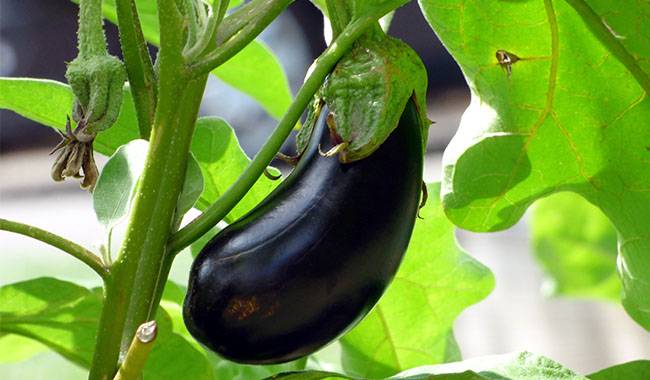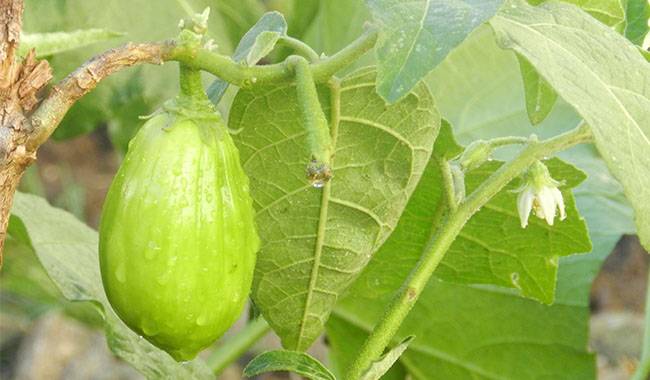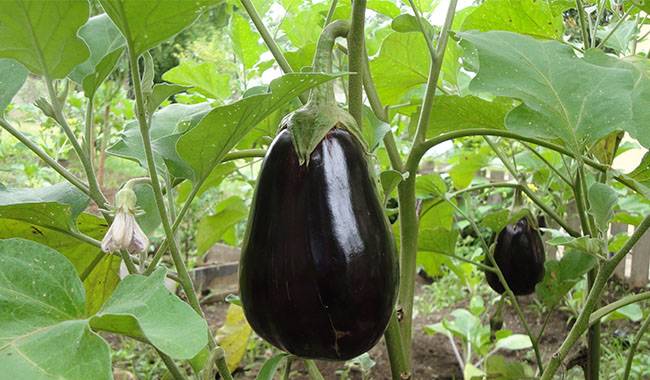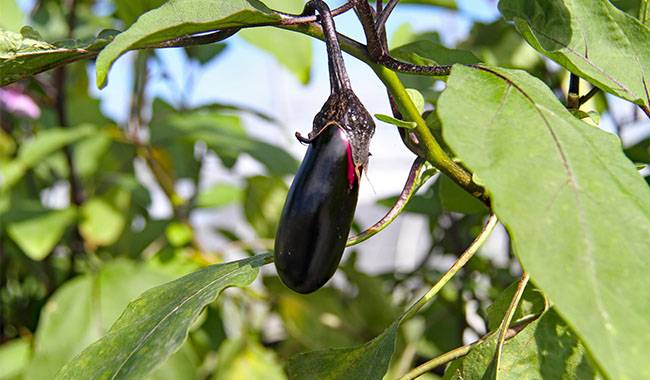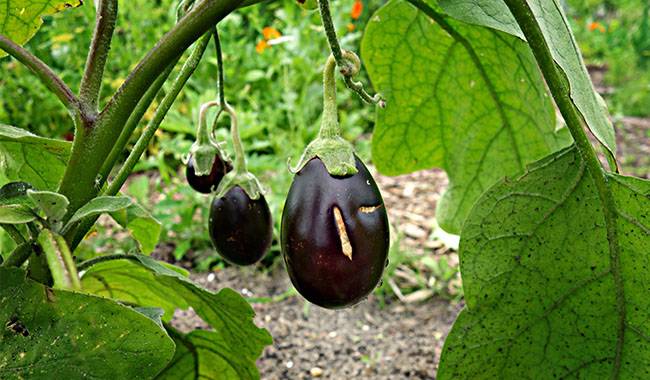
Eggplants, like other vegetable crops, are susceptible to pests and diseases. By following all the recommendations for outdoor cultivation, you can minimize the number of treatments for eggplant pests and diseases. And by using biological protection on private farms, you can get eco-friendly products.
AGRONOMIC MEASURES TO PROTECT EGGPLANT FROM DISEASES
The main measure to reduce the intensity of fungal disease infestation of eggplant is the spatial isolation of cultures, i.e., cultivation in crop rotations and return to the same location no earlier than 3-5 years.
Eggplant should be placed only in the recommended predecessors: beans, melons, carrots, cucumbers, onions, early cabbage, etc.
Plant only healthy eggplant seedlings with no signs of pests or diseases.
Avoid overgrowing plants and excessive fertilization, especially with nitrogen.
Plant and sow only approved eggplant varieties, preferably not resistant to a single disease, but a group of diseases.
PREPARING THE SOIL FOR GROWING EGGPLANT SEEDLINGS IN THE OPEN FIELD
Since autumn, the soil has been incorporated with humus, mature compost, and mineral phosphorus, and potassium fertilizer. Make 11-13 Lb (5-6 kg) of organic matter, one cup of wood ash, 30 g of calcium superphosphate, and 20 g of potash on 11 sq. ft. of medium fertility soil. If the soil is poor, double the application rate. On heavy soils, apply at least 1 bucket of mature humus. To increase the water and air permeability of the soil, fall sowing and other seeding have been used successfully recently. The soil should be turned to the full length of the shovel. Late deep digging has destroyed some home nests of black Mole cricket.
DESTRUCTION OF MOLE CRICKET
In spring, level the area under the eggplant with a rake to remove soil crusts and slow down water evaporation. When the weather warms up, and the soil in the 4-6inch (10-15 cm) layer of roots warms up to 57-59°F (14-15ºС) or 1-2 weeks before planting seedlings in the open ground, you carry out the extermination of Mole cricket. Mole cricket is harmful to almost all crops so that you can treat the whole garden at the same time.
Prepare bait for Mole cricket
Unfortunately, the most effective way to kill Mole cricket is to use chemicals. So be careful when carrying out the work and observe hygienic conditions.
Depending on the size of the garden, cook the right amount of any grain crop (wheat, rye, oats), any coarse grains, peas semifreddo until half cooked. Drain excess water. To the prepared substrate, add 2-3 tablespoons of sunflower oil (preferably unrefined and scented) and 1-2 ampoules of Dimethoate. Another pesticide with a pungent odor can be used. Stir the mixture well (use double gloves or a flat stick).
Bait application
Divide the field into squares by making shallow furrows 1-2inch (2.5-5cm) every 12-16-20inch (30-40-50cm) with a sharp hoe. Sprinkle a little water on them. Moisten so that most of the trench is wet. Mole cricket in dry soil will run to the moist areas. After watering, introduce the prepared bait into the trench and cover it with a 0.8-1.2inch (2-3 cm) layer using a rake. Mole cricket is affected by the insecticide, and they suffocate in the soil, all crawling to the ground. Sometimes this suffering lasts 3-4 days. 2-4 hours later, the “harvest” of Mole cricket is started to be removed so that birds and domestic cats are not poisoned. Timely baiting for 2-3 years can rid the vegetable garden of 80-90% of this pest.
PLANTING EGGPLANT SEEDLINGS
Planting seedlings in prepared soil is done in stable warm weather typical of the region, with good soil warming of at least 59°F (15ºC) at the root level of 4-6inch (10-15 cm). Mature eggplant seedlings should have 5-7-9 leaves on a straight trunk, 1-3 buds, and a well-developed suspension root system.
In the evening, pour domestic seedlings into nursery containers containing a mildly colored manganese solution of a rooting agent or other root-forming agents. Plant the seedlings in the prepared holes before 10-11 a.m. or after 4 p.m. If the seedlings are purchased at the market, soak them in the same solution for 3-4 hours, soak the roots in clay putty and plant them in the ground, pre-sprayed with a 1% solution of Bordeaux mixture.
The eggplants will slowly root during the first 1-2 weeks. Weakened by transplanting, they quickly lose moisture, especially on sunny days. The leaves lose their luster and wilt, and the plant may lose its first buds. During this period, it is best to cover the eggplants with a single layer of non-woven polypropylene spandex (other material), secured on tall stakes 12-16inch (30-40 cm) to prevent the sun’s scorching. When active growth begins, the temporary cover is removed.
DISEASES OF EGGPLANT DURING THE GROWING SEASON
During the growing season, the crop suffers from several diseases, the most damaging of which are root rot, tracheal mildew (Fusarium, Verticillium, Phytophthora), leaf spot, and columnar diseases. Fungal and bacterial rots affect the root system of the eggplant and cause the death of the entire plant. In addition to root rot, the crop is also affected by negative fungi, bacteria, and viruses that cause diseases of the above-ground parts and fruits of eggplant. Diseases on eggplant can be controlled by treating the soil and the above-ground parts of the crop in several ways.
- Biochemicals harmless to plants, humans, animals, and beneficial insects (bees).
- Chemical products that quickly eliminate diseases. However, they have a negative impact on human health and the quality of agricultural products, in which residues of chemical components can accumulate.
- Chemical agents can also be used in the form of plant decoctions and infusions with fungicidal and insecticidal properties.
BIOLOGICAL METHODS TO PROTECT EGGPLANT FROM DISEASES
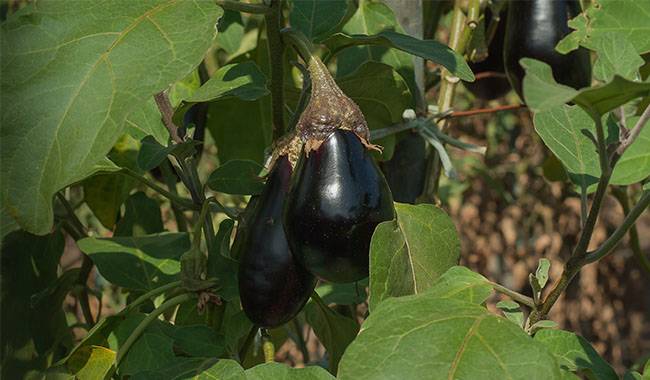
To grow organic products in the countryside, it is best to avoid the use of chemical agents. Nowadays, private gardeners can cultivate crops using protective agents based on natural materials (fungi and bacteria effective microbiota). They are called EM preparations. They act as antagonists against disease-causing microflora in the soil and green plants, destroying disease-causing pathogens.
Unexplained wilting of the above-ground parts of eggplant may indicate that the crop’s roots are infested with fungal decay of various etiologies. Biological agents based on fungal effective microbiota are used for soil treatment against pathogens. To reduce the number of treatments, a tank mixture of several biological agents can be prepared.
Remember! When preparing a spray mixture, prepare a solution of each biological agent separately according to the instructions and then check their compatibility. If the result is positive, mix the ready-to-use individual solutions into one compound.
When used together, the canned solutions enhance the effect on the pathogenic microbiota. Fungus-based bio fungicides penetrate the mycelium of disease-causing fungi and destroy them, while bacterial fungicides “work” like antibiotics. For soil disinfection, dry formulations or working solutions of other EM formulations can be used, including those based on unique organic (EM) concentrates.
Systems for treating soils with biological agents
Unlike chemical agents, biological agents do not kill disease in a single application. They require longer systemic applications, especially after rain or during wet weather. Therefore, to reduce the number of treatments, it is better to use biological agents in the form of tank mixtures, which can protect plants from several diseases at the same time.
The following tank mixtures can be prepared for soil treatment.
- Trichodermin + ampelomycin + glyocladin + binoram;
- Glyocladin + binoram;
- Trichodermin + bactophyte;
- Planriz-bio + Coniothyrium and others.
Too frequent treatment does not always lead to positive results. To make the biologics work better, start treating the plants at an early stage. The first soil treatment with tank mixtures or individual biological preparations is carried out 10-12 days after sowing seedlings in the open ground.
Plant treatment systems using biological agents
For obvious plant diseases (bud drop, yellowing or curling of leaves, leaf shriveling, powdery mildew, etc.), treat the plants with a solution of biological agents. Spray the plants with such solutions every 7-10 days throughout the growing season. The solutions are supplemented with micronutrients during the budding stage and the second fruit harvest. You can add Gamair or related to a canned mixture prepared for soil spraying and spray the plants with the compound mixture. This method will increase the effectiveness of the treatment. While there are remedies for fungal and bacterial infestations, there are no remedies for viral diseases (Mosaic virus, etc.). Affected plants are removed from the field and burned.
When using bio fungicides, it is necessary to clearly identify the disease and treat the plant according to the recommendations for using that particular bio fungicide. If the disease is misdiagnosed, the product will not work. If you are not sure of the exact identification of the disease, treat the plant with a tank mix that targets several pathogens.
Chemical protection of eggplants against diseases
The use of chemicals to treat vegetable crops and bush gardens is not recommended in Dhaka and private homes. Chemicals have a long degradation period, and the residues of the compounds have adverse effects on humans, animals, birds, and beneficial insects. Experts recommend that if chemicals are used, stop treatment one month before the crop matures and use them as recommended.
Chemicals are not all compatible with each other, some have inhibitory effects only on certain pathogens, which is the reason for the use of different agents, and therefore the number of treatments increases exponentially. Recently, new chemical agents are highly efficient at very low doses and have a short waiting period (3-10 days to 12-20 days). Be very careful with chemicals, do not get carried away with increasing doses during dilution, use personal protective equipment and protect respiratory organs, eyes, and skin from penetration of poisons.
Plant treatment systems using insecticides
Treat eggplant with a combination of diseases (gray rot, Phytophthora, bacterial spot, blackleg) with Bordeaux mixture, copper sulfate, copper (Cu2+) fungicide in liquid form, etc. Depending on the developed plant treatment system, protection measures start 3-4 weeks after germination and continue 2-3 weeks after planting the seedlings into the soil. The interval between treatments is 7 to 14 days, depending on the weather conditions.
PEST CONTROL OF EGGPLANT
The most dangerous pests of eggplant are aphids and the Colorado potato beetle. Aphids are small sucking insects that can destroy an eggplant’s planting in a matter of days. They invade the above-ground organs of the plant (stems, leaves, flowers) and literally suck out all the plant’s sap. Colorado potato beetles form several generations during the growing season, destroying up to 80% of the crop. By treating these pests, spider mites will also be eliminated at the same time. This sucking pest causes considerable damage to plants.
Biological methods of protection of eggplant from pests
Biological agents that protect crops from insect pests are called biopesticides. They are based on an effective group of fungi (avermectins), bacteria, and a group of soil entomopathogenic nematodes.
Bacteria-based biopesticides are effective in killing the larvae of biting and sucking pests. The most common biological agents are Bitoxybacillin and others. These agents are good because they can be used to treat not only vegetable crops but also fruit and berry crops. They are also used successfully in protected areas.
Equally important for pest control are fungal-based biopesticides such as thiamethoxam, imidacloprid, thiamethoxam – insecticides, etc., which can be used to treat plants even during harvest. They are most effective in eliminating pests in the early stages of development. Penicillin pesticides purposefully eliminate nematodes, which is especially important for eggplant during the development of seedlings and during the first weeks of cultivation in permanent protection and open fields.
Note! Biological insecticides based on EM fungi are effective only in humid conditions at temperatures of about 77°F (25ºC). Spraying of these products is best done after watering, in the morning, or after 4 pm. They are capricious when it comes to storage. They lose their insecticidal properties when frozen and when exposed to direct sunlight. Insecticides can be tank-mixed with bio fungicides. Product compatibility must be checked. Dosage and treatment duration must be as directed, or effectiveness will be drastically reduced.
Use of chemical agents to protect eggplants from insect pests
Eggplant is treated with Confidor Extra and other products to control sucking and biting pests. Considering how harmful they are, treatment should be stopped before flowering. If the preparation is applied in time, 1-2 sprays are sufficient. The first is done as a preventive measure in case of a single lesion, the second after 2 weeks. If the plant is infected with epiphytes, spray with one of the above-mentioned preparations or a canned mixture every 10 days. Remember! All chemical treatments must be completed before the crop begins to flower on a large scale.
FOLK METHODS TO PROTECT EGGPLANT FROM PESTS AND DISEASES
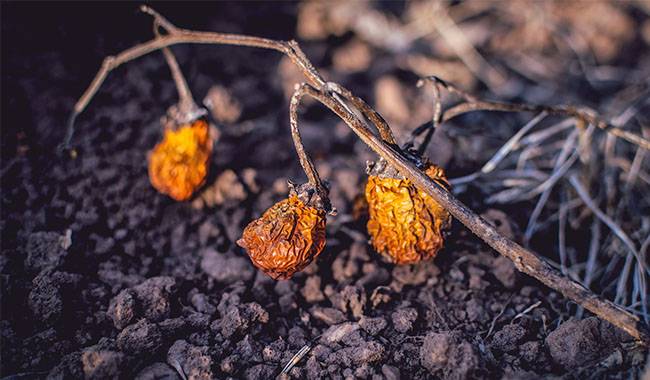
Folk methods of protecting eggplant from pests and diseases are mainly simplified by preparing herbal decoctions and infusions and spraying diseased and damaged crops with them. It should be stated straight away that the 1st spray is not enough and that multiple sprays are not as harmless as they seem. In fact, the application of toxic herbal decoctions is also chemically effective against pathogens and, at the same time, not very desirable for human health. Examples include pollination with soot, spraying with a decoction of Dendrobium and the same mugwort, or using chemically sprayed Dioscorea pills to control some pests during the growing season.
- Some gardeners recommend preparing decoctions of mugwort, chamomile, and yarrow and spraying the plants with them.
- Fall walnut leaf infusion is effective in killing aphids. In the fall, fill a metal bucket 2/3 full of walnut leaves, pour boiling water on top, and cover tightly. The leaves are infused during the fall-winter-spring period. This produces a concentrate. Prepare a working solution. Dissolve 0.26-0.52 Gal (1-2 liters) in 2-2.5 Gal (8-10 liters) of water and spray it on the plants. Pre-spray one plant and observe the crop response to the applied solution for 3-4 hours. If the plant does not show any inhibition, it is ready for spraying.
- Pollination with grass ash or spraying with a grass ash infusion can help control aphids. Take 1-1.5 cups of ash per 2.5 Gal (10 liters) of water. Let it sit for a day, strain, and spray it on the plants. Green soap or laundry soap should be added to all solutions to allow better adhesion to the broth.
- According to some vegetable growers, Colorado beetle larvae and aphids are effectively killed when sprayed with a compound decoction. Run one cup each of dandelion leaves, onion, and garlic cloves through a meat grinder. Pour in 2.5 Gal (10 liters) of water and 1-2 tablespoons of soap. Soak for 2-3 hours, strain, and spray plants. Spider mites, aphids, and Colorado beetle larvae will be successfully killed at any stage of development.
There are many folk gatherings and decoctions of different ingredients. The effect is different, and each vegetable grower can test the solution for himself and choose the formulation that has a clear effect when used. It should be noted that compliance with the requirements of agricultural techniques and timely implementation of the necessary measures will guarantee a harvest with minimum use of any means of protection against pests and diseases.
More Related Information About Planting & Growing Eggplant Plants




